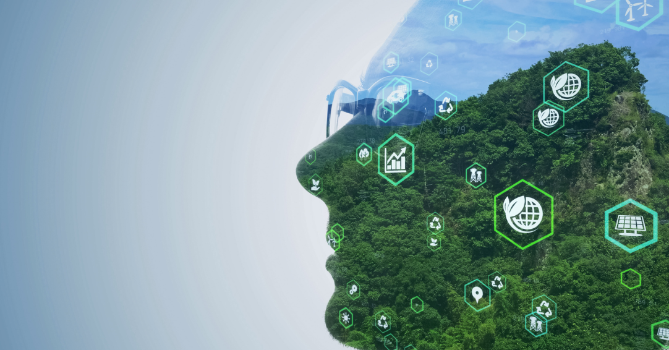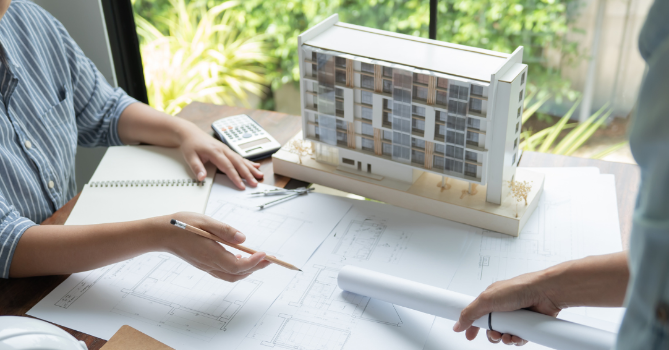.png)
Future Foundations: Exploring Biomimicry in Modern Building
Our world is changing, and so must our buildings. Today, more than ever, we need homes, offices, and public spaces that do more than just stand there. We need them to help us fight climate change and save energy. This is where biomimicry comes in. It’s a cool way of designing things. It means looking at nature and learning from it. Trees, termites, and even turtles have figured out how to live comfortably without wasting resources. Architects are now using these ideas to make buildings that are smarter, use less energy, and fit better with our environment. In this blog, we're diving into how this works. We'll see how old ideas from nature are shaping the future of our cities. It's not just about buildings; it's about building a world that lasts. Ready to see how we can build a sustainable tomorrow? Let’s explore.
Biomimicry might sound fancy, but it’s simply about learning from nature to make better buildings. Imagine how plants and animals have solved problems for millions of years. They live efficiently, using little energy and adapting to their surroundings. Architects are now using these ideas to design buildings that are smarter and more in tune with the environment.
First, let's talk about what makes biomimicry special. It's not just about making things look natural. It’s about using nature’s tested designs to solve human problems. For instance, a building can cool itself like a termite mound, or be sturdy like a spider’s web.
Here are the basics:
1. Sustainability: Buildings designed this way don’t just serve us today. They’re made to last and to help the planet too.
2. Resource Efficiency: By mimicking how nature works, these buildings use less water and energy.
3. Adaptation: Like animals that adjust to their habitats, biomimetic buildings can change based on weather or the number of people inside.
Learning from the best, nature itself, architects create spaces that are not only practical but also beautiful and kind to our world. This approach isn’t new, but it’s gaining speed as we face bigger environmental challenges. From using sunlight better to managing water smartly, nature’s lessons are helping us build a better future. As we go through some standout examples next, you’ll see just how exciting and useful biomimicry in architecture can be.
Biomimicry in architecture means taking cues from nature to design buildings that are smart and sustainable. It’s about solving problems by asking, "How would nature handle this?" This approach goes beyond aesthetics, tapping into nature's proven strategies to build structures that are functional, efficient, and environmentally friendly.
Here’s what makes biomimicry a game-changer in architecture:
1. Sustainability: Just as nature operates without depleting its resources, biomimetic architecture aims to create buildings that serve our needs today without compromising the ability of future generations to meet theirs. It’s about constructing spaces that minimize environmental impact and integrate seamlessly with their surroundings.
2. Resource Efficiency: In nature, nothing goes to waste. Biomimetic architecture adopts this principle by optimizing energy use and reducing waste. For example, buildings can be designed to use natural ventilation systems inspired by termite mounds, reducing the need for mechanical cooling.
3. Adaptation: Nature is adaptive, constantly evolving to meet the changing demands of its environment. Biomimetic buildings incorporate materials and designs that adjust to weather conditions and user needs. An example is responsive façades that change according to sunlight and temperature, much like pinecones open and close based on humidity.

These principles of biomimicry help architects design buildings that not only push the envelope in terms of aesthetics but also bring practical benefits such as reduced energy bills and improved occupant comfort. By looking to the resilience and ingenuity of natural systems, biomimicry provides innovative solutions that can transform our built environment, making it more sustainable and harmonious with the natural world.
As we explore specific examples of how these concepts are applied in real-world structures, you’ll see how biomimicry brings exciting possibilities to urban design and architecture.
In the world of architecture, embracing new technologies and materials is crucial for advancing sustainability. One standout innovation is the use of ETFE (ethylene tetrafluoroethylene), a material that mimics cellular structures. Not only is it durable and translucent, but it’s also highly efficient in material use. This can be seen in the Eden Project in the UK, where ETFE cushions form biomes that create distinct climates for diverse plant life.
3D printing is another revolutionary technology reshaping how we think about building. It allows architects to produce complex, organic forms that are both beautiful and resource-efficient. These methods reduce waste during construction and enable the creation of structures that would be impossible with traditional building techniques. For instance, 3D printing has been used to create components that replicate bone structures, offering strength without heavy materials.
Additionally, advancements in smart materials and nanotechnology are opening up new possibilities. Materials that adjust to environmental changes—like coatings that change color based on temperature or humidity—can significantly enhance a building’s energy efficiency.
Together, these technological and material innovations represent a major step forward. They not only reduce the environmental footprint of new buildings but also improve their functionality and resilience. By integrating these advanced solutions, architects can craft buildings that are not just places to live or work, but active participants in a sustainable future.

Biomimicry in architecture brings us some of the most innovative and sustainable buildings in the world. Let's dive into a few remarkable examples:
Eastgate Centre, Harare, Zimbabwe: Designed by Mick Pearce in collaboration with Arup engineers, the Eastgate Centre is a prime example of biomimicry influencing modern architecture. Inspired by the self-cooling mounds of African termites, the building uses a natural ventilation system that eliminates the need for conventional air conditioning. This design reduces energy consumption by leveraging passive cooling and heating, maintaining a comfortable internal climate throughout the year.
The Gherkin, London, UK: Officially known as 30 St Mary Axe, The Gherkin is another striking example of biomimetic architecture. Its design, spearheaded by Norman Foster, mimics the ventilatory properties of sea sponges and the aerodynamic shape of a pine cone. These natural inspirations contribute to the building's energy efficiency. The Gherkin's structure allows natural air to flow up through spiraling atria, cooling the building passively and reducing reliance on power-hungry HVAC systems.
The Eden Project, Cornwall, UK: Mimicking cellular structures, The Eden Project's biomes are constructed from ETFE cushions, providing a lightweight, transparent, and self-cleaning envelope that houses thousands of plant species. This design not only conserves energy but also creates a series of microclimates, each tailored to different botanical environments. The use of ETFE significantly lowers the material demands and enhances the energy efficiency of the structures.
Biomuseo, Panama City, Panama: Designed by Frank Gehry, the Biomuseo stands out with its vibrant and colorful design inspired by the bright hues and forms found in local fauna and flora. This building uses its design to educate on biodiversity and conservation, demonstrating how architecture can echo an environment's ecological context and biodiversity.
Each of these structures showcases how architects can harness the ingenuity of natural systems to create buildings that are not only aesthetically pleasing but also significantly reduce environmental impact and enhance functional efficiency. These projects serve as benchmarks in the field, illustrating the practical and sustainable applications of biomimicry in modern urban environments.
While biomimetic architecture offers revolutionary benefits, it also faces distinct challenges. One major hurdle is the complexity of translating biological systems into functional architectural designs. Nature's solutions are often intricate and multifaceted, making them difficult to replicate in practical, cost-effective ways. Architects and engineers must continue to innovate in materials science and construction methods to bridge this gap effectively.
Another challenge lies in the regulatory environment. Building codes and industry standards are often slow to adapt to innovative techniques, which can hinder the implementation of biomimetic designs. There's a need for more dynamic regulatory frameworks that can accommodate and encourage sustainable innovations without compromising safety and functionality.
Looking forward, the future of biomimetic architecture is promising but requires a multidisciplinary approach. Collaboration across biology, engineering, and architecture is essential to harness the full potential of biomimicry. Additionally, as technology advances, particularly in artificial intelligence and machine learning, these tools can help decode complex biological processes and translate them into viable architectural solutions.
Ultimately, the success of biomimetic architecture in mainstream construction will depend on broader acceptance and integration of sustainable practices, continuous research and development, and supportive policies that foster innovative building techniques.
Biomimicry in architecture shows us how inspired design can not only emulate nature's beauty but also its efficiency and sustainability. As we move forward, the integration of nature's principles in building design isn't just an option but a necessity for a sustainable future. The journey is filled with challenges, yet the potential to revolutionize how we create and interact with our spaces is enormous. By continuing to learn from the natural world, we can build environments that are not only functional and beautiful but also kinder to our planet. Let's embrace these innovations and push the boundaries of what our buildings can achieve.